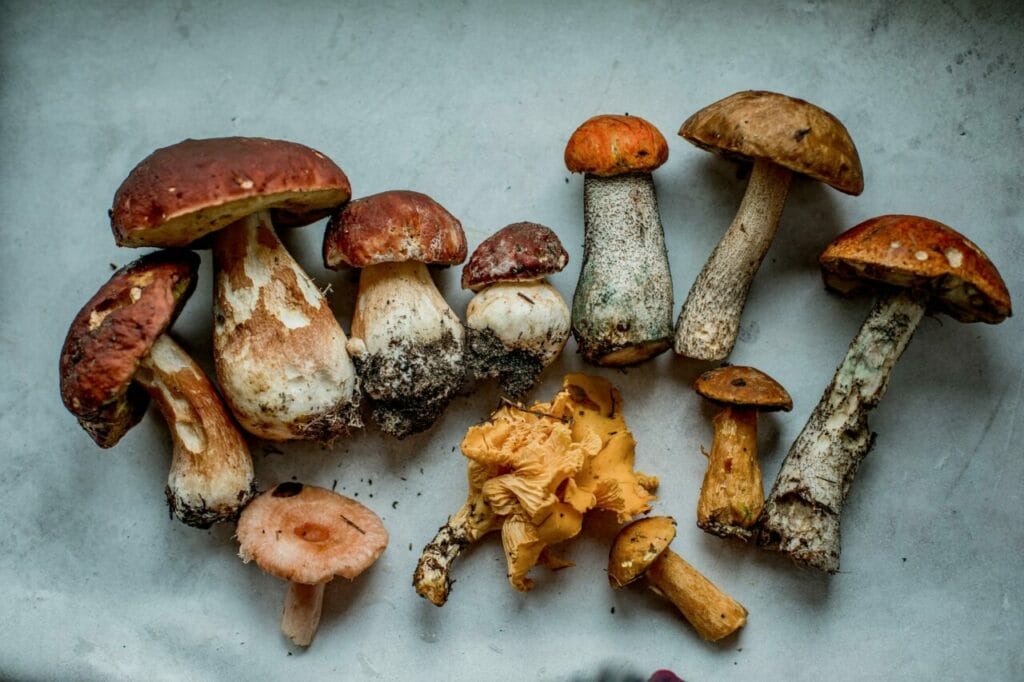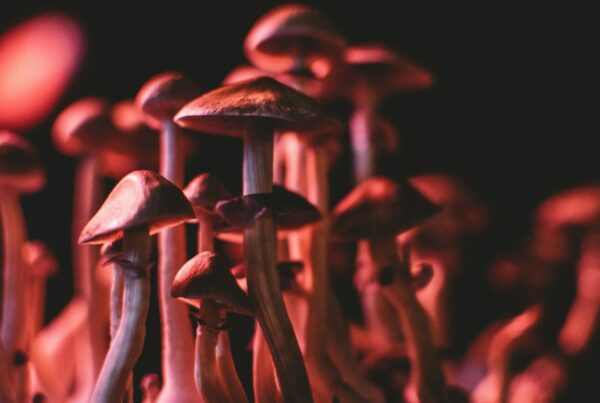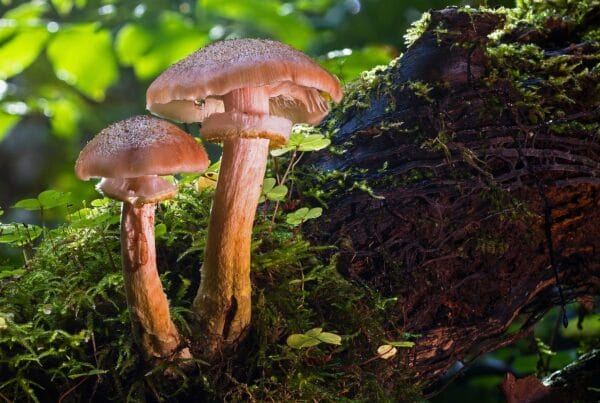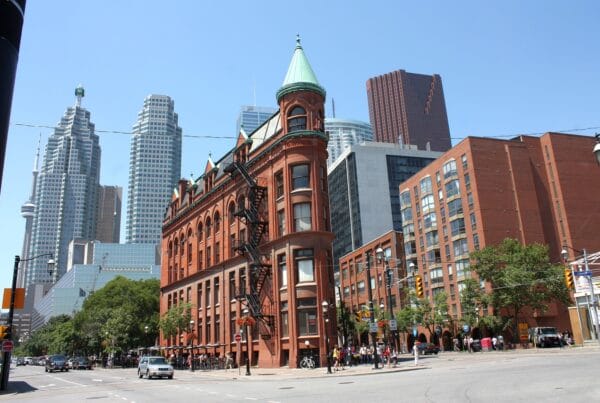Typical anxiety treatments often involve medication and therapy. However, these methods might not be effective for everyone due to possible side effects. These difficulties have sparked rising interest in alternative approaches like psychedelic therapy, which employs substances such as “magic mushrooms Montreal” among others.
Welcome to your premier destination to buy psychedelics online in Canada. We provide quick, secure, and confidential services.
[toc]Key Points:
- Psychedelic therapy combines the therapeutic benefits of psychedelic substances with traditional talk therapy to facilitate the healing process.
- Psychedelic therapy can improve emotional well-being and overall quality of life through spiritual journeys.
- The integration process is a vital method in psychedelic therapy aimed at ensuring the sustained effectiveness of the therapy session.

Statistics on Anxiety Disorder in Canada
According to the 2022 Mental Health and Access to Care Survey, there is a concerning increase in the prevalence of anxiety disorders in Canada. The percentage of Canadians aged 15 and above diagnosed with generalized anxiety disorder in the year preceding the survey has risen from 2.6% in 2012 to 5.2% in 2022.
Contrasting Traditional Treatment and Psychedelic Therapy
Standard treatments for anxiety disorders generally involve a combination of psychotherapy and medication. Psychotherapy, also referred to as psychological counselling, is a collaborative effort between a therapist and the patient to mitigate anxiety symptoms.
On the other hand, anxiety medications relieve symptoms by tailoring treatment to the specific type of anxiety disorder and considering any concurrent mental or physical health problems. Although treatment may differ based on individual circumstances, psychotherapy and medication remain the core strategies.
In psychedelic therapy, sessions are unique as they include one or two doses of a psychedelic substance, along with other therapeutic
Techniques:
The Role of Psychedelics in Therapy
Psychedelic therapy refers to a therapeutic technique that employs the advantages of psychedelic substances to enhance the healing process. Known for their hallucinogenic properties, these substances have been instrumental in holistic healthcare and spiritual rituals in different cultures for millennia.
The substances primarily used in these therapeutic sessions are Lysergic acid diethylamide (LSD) and psilocybin. LSD induces alterations in mood, perception, and consciousness. Psilocybin, according to Health Canada’s website, is the active ingredient in magic mushrooms. Consuming these mushrooms can trigger sensory experiences, such as visual, auditory, or tactile hallucinations.
Dosage Guidelines for Three Sessions
During psychedelic therapy, specialists assess patients to determine the appropriate psilocybin dosage for their sessions. The dosage varies, with some patients beginning with moderate amounts, while others can handle larger quantities. The treatment plan usually consists of one to three medication sessions, each lasting six to eight hours and spaced out over several weeks. This method differs from traditional medications that require daily intake until a healthcare professional directs otherwise.
A Spiritual and Transformative Experience
Anxiety medications are typically used to manage symptoms, whereas therapy aims to address the root causes of the condition. Unlike these medications, psychedelic therapy can significantly impact emotional well-being and quality of life.
The immersive experiences can lead to profound realizations, heightened self-awareness, and improved emotional regulation. These outcomes can promote personal development, encourage positive behavioural changes, and enhance overall mental health.
Impacts
| Expanded Consciousness | Altered states of consciousness provide a new outlook on the world. | These heightened perceptions often result in:Deep insightsEpiphaniesEnhanced comprehension of oneself and one’s surroundings |
| Emotional Healing | Enables emotional healing by offering the chance to face and work through unresolved trauma, grief, or emotional pain. | This process aids in:Accessing deeply hidden emotionsReleasing emotional blockagesFostering emotional well-being |
| Increased Self-Awareness | Enhances interconnectivity among sensory brain areas while decreasing connectivity within the default mode network. This network integrates brain areas that are interlinked, focusing on self-referential thinking and the individual’s perception of self.” | These regions aim to: Modify negative thought processes, beliefs, and routine behaviors. Empower users to obtain profound insights into their authentic selves, motivations, and interpersonal interactions. |
Somatic Therapy
Somatic therapy, while not usually linked with psychedelic therapy, is garnering interest due to its possible benefits. This approach, centered around the body, examines the connection between the mind and body. It’s based on the idea that past traumas can result in sensations being retained in the body. Somatic therapists help individuals in identifying these physical sensations and utilize therapeutic methods to alleviate this tension.
Integration
This offers a pathway for clients to find clarity, broaden their viewpoint, and acquire wisdom from their psychedelic experiences. The transformational process happens during integration sessions with the therapist and the client’s proactive initiatives outside of psychedelic journeys. Integration enhances the transformative impacts of psychedelics by actively engaging with surfaced insights and emotional revelations.
Types of Integration
- Journaling. By documenting experiences, individuals can solidify memories for more accessible future recall. It also enables clients to examine their experiences from various perspectives to reveal different interpretations, meanings, and associations.
- Art. This provides an effective way to capture a psychedelic voyage’s complex feelings and emotions in a creative and visually expressive manner.
- Practicing Nature-based Approaches. These can be as simple as taking mindful walks in the woods or finding peace next to a tranquil water body. Therapists can assist clients in recognizing the intricate patterns within nature or suggest using natural elements like plants, stones, water, and candles as grounding tools.
- Engaging in Integration Groups. Group sessions with individuals sharing similar experiences present a significant opportunity for reflection, support, and connection. The power of psychedelic therapy to spark a sense of interdependence and shared understanding beyond individual boundaries is fundamental.
The Role of These Techniques in Anxiety Treatment
The primary pharmacological principle behind all psychedelics is their ability to act as agonists, or activators, of serotonin (5-HT) 2A receptor. A significant aspect of psychedelic research involves studying their effects on the brain’s default mode network. This network is particularly linked with recurring thoughts and conditions such as depression and anxiety disorders. Treatment can significantly reduce anxiety levels, with results lasting up to 12 months following treatment.
After a psilocybin session, often involving intense spiritual experiences, patients participate in a dialogue with their therapist. In these therapy discussions, professional healthcare providers strive to actively listen to the patient while applying specific strategies and techniques to enhance the positive effects of the treatment.
These techniques work together to help anxiety sufferers achieve long-lasting relief in fewer sessions compared to traditional treatments.
Transform Your World, One Session at a Time
Many people rely on standard anxiety treatments, but not all find them effective or satisfying. Psychedelic therapy offers a different approach, employing distinctive methods that can trigger transformative experiences. These techniques work in tandem to yield deep, long-term results—sometimes up to a year following just one to three sessions.
Beyond improving mental health, this therapy could also result in significant cost savings for patients. Ready to discover a new path to wellness? Uncover the potential of psychedelic therapy with Buy Mushrooms Online Canada.
Frequently Asked Questions
Is there a specific type of magic mushroom used for psychedelic therapy?
In studies related to psychedelic-assisted therapy, it’s often overlooked to specify which mushroom type is used. Psilocybe cubensis is typically the preferred choice.
Online magic mushroom dispensaries offer a variety of strains to cater to different preferences. You have the freedom to choose any strain to experience the therapeutic benefits of psychedelics. However, it’s important to be careful and choose a reliable vendor to avoid obtaining unsafe magic mushrooms from dishonest sources.
How long does psychedelic therapy last?
Psychedelic therapy consists of several phases and its duration can vary. A single session where the psychedelic is taken lasts between 4 to 8 hours. The entire therapy process, which includes preparation, the session, and subsequent discussions, can span from a few weeks to several months.
In terms of long-lasting effects, individuals have reported improvements in their mental health for several months or even up to a The benefits can be seen within a year, even after only a single or several sessions.
Several sessions are included in the program.
Does the therapist guide the patient on their spiritual journey?
In this stage, professionals like therapists or other staff members may accompany the patient. Studies show that Spiritual Health Practitioners (SHPs) contribute unique and invaluable insights to enhance participants’ health and support their progress on a spiritual journey. Some people engage the services of an SHP, while others rely on the therapist or specialist available.
Is the concept of “set and setting” incorporated into psychedelic therapy?
Yes, both the mental state (set) of the individual and the physical surroundings (setting) are vital in safely facilitating spiritual experiences during a psychedelic therapy session. The individual’s mental framework informs their spiritual journey, affecting the experience before and throughout the psychedelic session. Factors like beliefs, expectations, emotional conditions, and intentions determine the direction and depth of the experience.
Primary Source: Psychedelics as Emerging Treatments for Anxiety Disorders: Opportunities and Challenges in a Budding Field – PMC (nih.gov)
About the Authors:
Franklin King, IV, MD. and Rebecca Hammond, M.D.
Related Articles:





